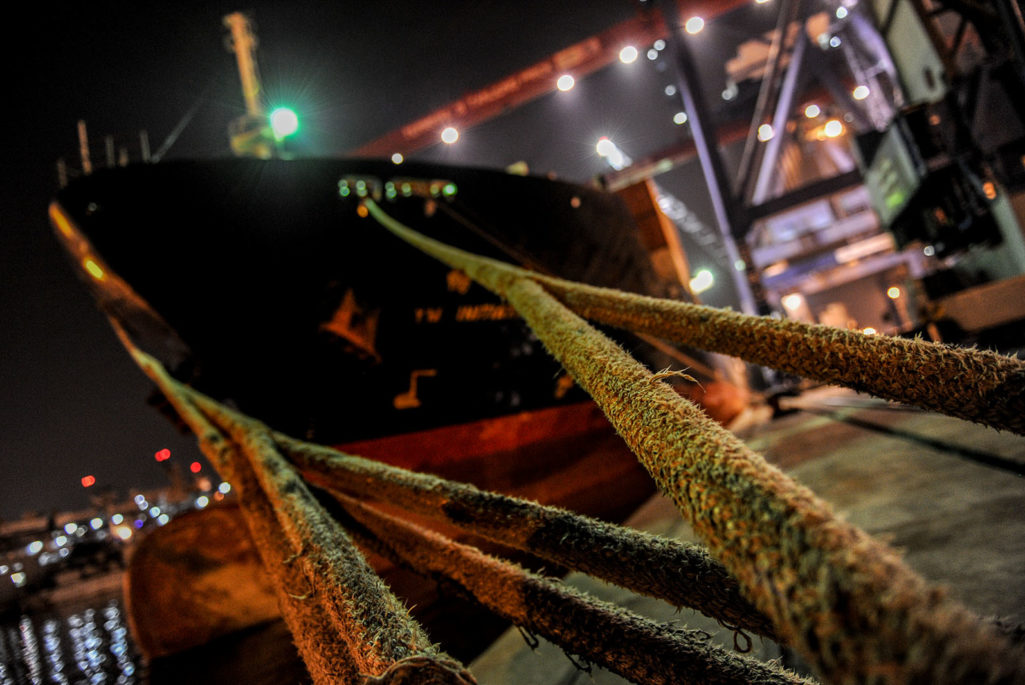Cargo Loss Control: How to Make a Million in Two Hours

There are a myriad of so-called cargo losses that can be either physical (that is, some are stolen or mislaid and never arrive at their destination or were never shipped in the first place) or of a documentary nature—mistakes (deliberate or otherwise) in recording data on the shipping documentation, miscalculation, and/or mismeasurement.
Photo: Romeo Graced/AFP/Getty Images
Cargo loss control—three simple words. Often misused, little understood, yet worth billions of dollars a year as an industry.
Globally, 90 percent of all commodities and goods are shipped by sea. Most shipments are trouble-free and incur no losses. However, a small proportion do, and the losses are incredibly disproportionate when considering that the price tag of global cargo theft stands at an estimated $50 billion annually, according to the National Cargo Security Council.
There are a myriad of so-called losses that can be either physical (that is, some are stolen or mislaid and never arrive at their destination or were never shipped in the first place) or of a documentary nature—mistakes (deliberate or otherwise) in recording data on the shipping documentation, miscalculation, and/or mismeasurement. Almost all of these involve criminal intent and can be carried out with surprising efficiency and at small risk of detection.
In the loss control world, we deal predominantly in bulk cargoes as these are the easiest and most profitable to manipulate (physically and by calculation and/or mismeasurement).
For example, consider a crude oil cargo (Brent Crude) of 1 million barrels—that’s $52 million at today’s price that can easily be made to incur a loss (for either shipper or receiver depending on whom the perpetrator is working for) of up to 2 percent. Not much in empirical figures, but that equates to a loss of just over $ 1 million, literally at the stroke of a pen or misuse of a measuring instrument. Now multiply that by the number of oil shipments conducted annually—which accounts for nearly a third of global maritime trade—and you’ll see that my valuation of the worth of this industry may be massively understated at merely billions of dollars. And that is just calculating on crude oil shipments.
Other bulk cargoes like grains, ores, fertilizers, and refined products are subject to a similar degree of loss, although the methods differ from commodity to commodity—depending on their physical and chemical structure and storage methods. One major difference between liquid bulk and dry bulk cargoes is that the latter can be tested in terms of the quantity loaded by means of a draft survey. Unfortunately, that method, using the (supposedly neutral) ship owner data, is similarly open to abuse.
Even in this day and age of sophisticated equipment, the human machine can easily game the cargo system.
All that is needed in each case is a basic knowledge of physics and the ability to manipulate the instruments and gauges without being detected—an easy task in a busy tank farm, silo, laboratory, or onboard the vessel.
In the case of liquid cargoes, all that is needed is a basic understanding of the relationship between temperature, density and/or specific gravity and volume. Chemical composition and quality are also possible, more complex issues that are potential moveable feasts. Once you take into account the comparatives—e.g., the sample size of, say, 1 liter being used as a representative sample for 160 million liters (1 million barrels)—then even the tiniest intervention will have a massive impact on the shipment as a whole. Put more simply—if the sample was interfered with sufficiently to make a 0.1 percent change in the declared volume (an easy thing to do by adjusting temperature and density/specific gravity) it results in the loss (or gain, depending on the vested interests) of 1,000 barrels or $52,000. If the independent inspector is instructed (or “guided”) to maximize covered insurance losses of just 2 percent—bingo—20,000 barrels has just magically disappeared, or appeared, as the case may be. In dollar terms, we’re looking at something in excess of $1 million. And all it takes is about two hours of work.
In some cases of dry bulk cargoes, physical weighing occurs—but how accurate and recently calibrated is the weighing machine? Can its zero point be accurately and reliably tested? In others, a draft survey is relied on. Here the question becomes, “How accurate are the vessel’s hydrostatic data?” or “How accurately have the draft marks been painted?” Has the basic parameter (tons per inch immersion or TPI) been tested and checked after each case of structural work carried out?
So who stands to gain? The short answer is whoever employs the better “independent inspector” (by definition there is no such animal as an independent inspector as long as someone is paying for such services). The independent inspector working for the shipper will ensure that the (mis)measurements and (mis)calculations reflect a higher quantity shipped than is truly the case, whilst his “opponent” acting for the cargo buyer wants it to be understated. This principle holds good (but in reverse) at the port of discharge.
This article is not intended to be a comprehensive course in cargo loss control techniques and practices. Rather, it is an attempt to highlight the ease with which—even in this day and age of sophisticated electronic equipment—the human machine can so easily and discreetly game the system.
Neither is it an encouragement of criminal activity or for taking advantage of a flawed system. It is simply an eye opener on another aspect of the vast reach of the world’s illicit economy that passes largely unseen by the majority of the population, benignly ignorant of its impact and importance for the economy at-large.






